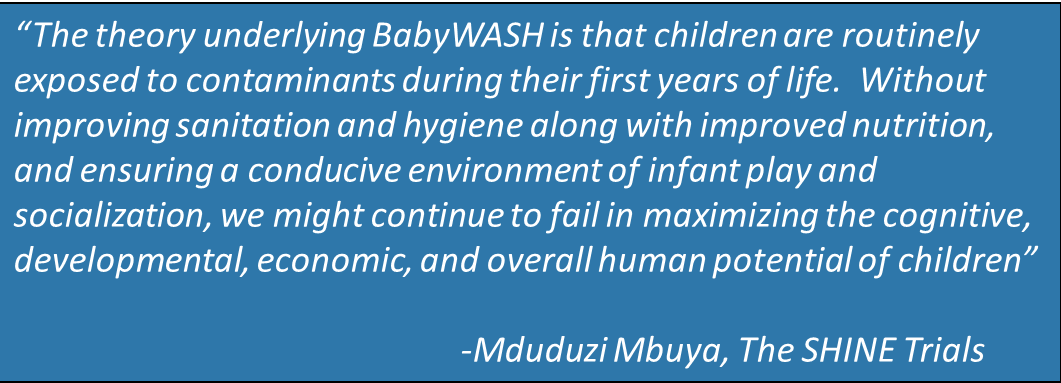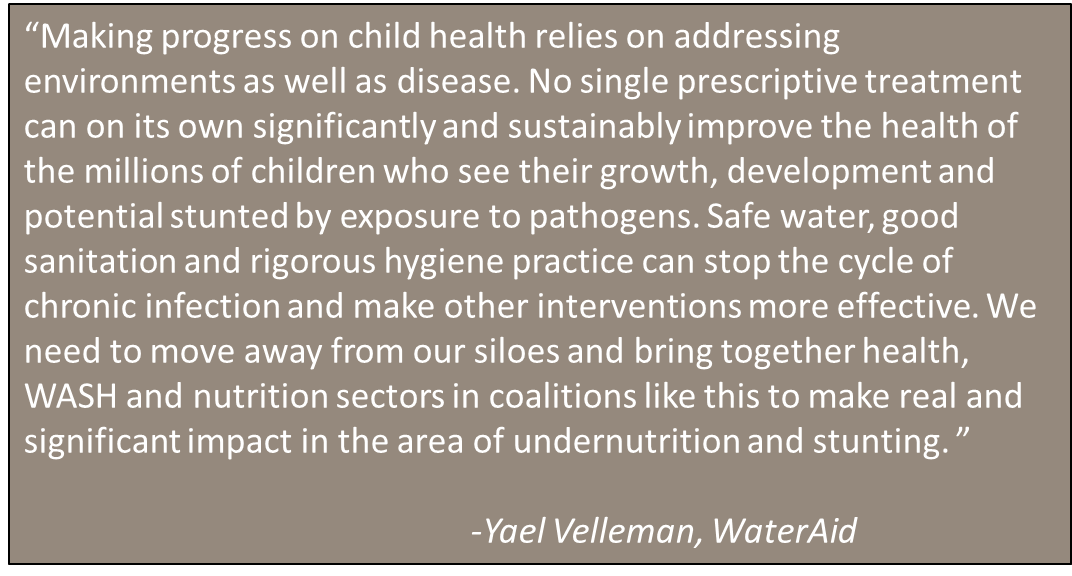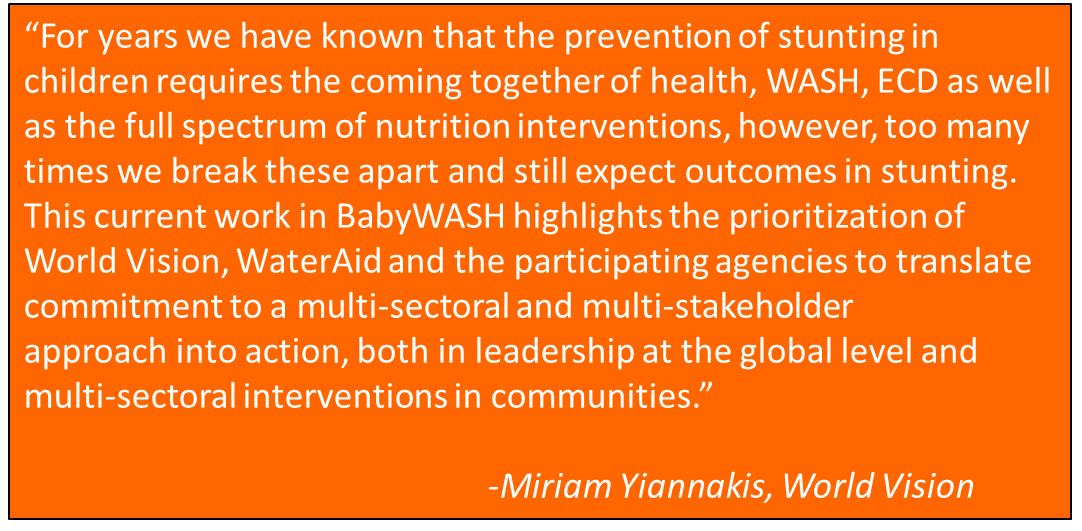
History
On 10 December 2015, World Vision and WaterAid hosted an exploratory meeting with other NGOs, academic institutions and funding organisations to discuss the BabyWASH concept. The conversation centered around the development of a coalition to bring together key sectors for the improvement of health and nutrition of children from conception up until the age of 2 by building on current and emerging evidence for the role of sanitation and hygiene in child growth and development.
Some of this emerging evidence surrounds environmental enteric dysfunction (EED), a condition where lack of sanitation in a child’s environment has significant effects on childhood stunting. Mduduzi Mbuya and Jean Humphrey from John Hopkins University have been working on EED, and their work was cited in the 12 December 2015 edition of The Economist. Mbuya, who presented at the meeting, said:
The group discussed the need for the respective sectors of water, sanitation and hygiene (WASH), maternal, newborn and child health (MNCH), early childhood development (ECD) and nutrition to work together along the first 1,000 days of life to more significantly improve the health and nutrition of children. While many organizations and donor agencies are set up around sectoral approaches to change, many health and nutrition problems do not simply fall into one sector. Yael Velleman, senior policy analyst on sanitation and health at WaterAid, remarked:
Meeting participants discussed the need for leadership and accountability in using the current evidence to inform better programming, as well as the potential for creating tools that would build both the effectiveness and efficiencies of multi-sectoral efforts to improve health and nutrition of children, their mothers and caregivers. Miriam Yiannakis, the Senior Nutrition Policy and Partnerships Advisor at World Vision, said:
From the beginning, the BabyWASH Coalition has striven to be multi-stakeholder and encourage a continuing conversation around integration. The Coalition has defined key objectives and set up workstreams that flow from these objectives.


